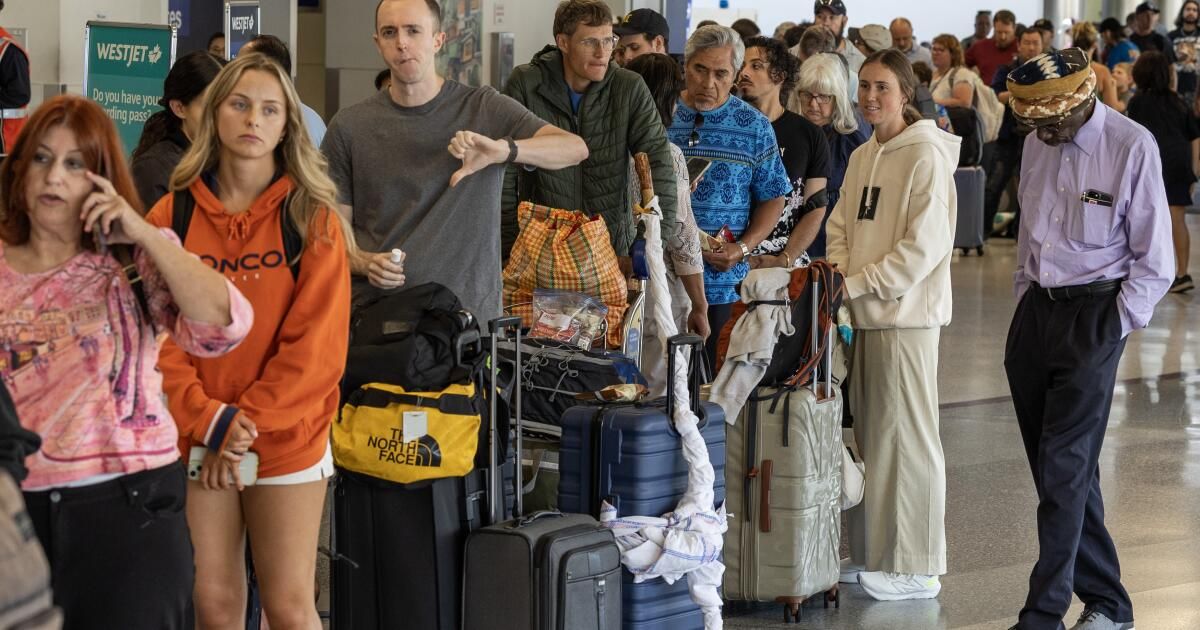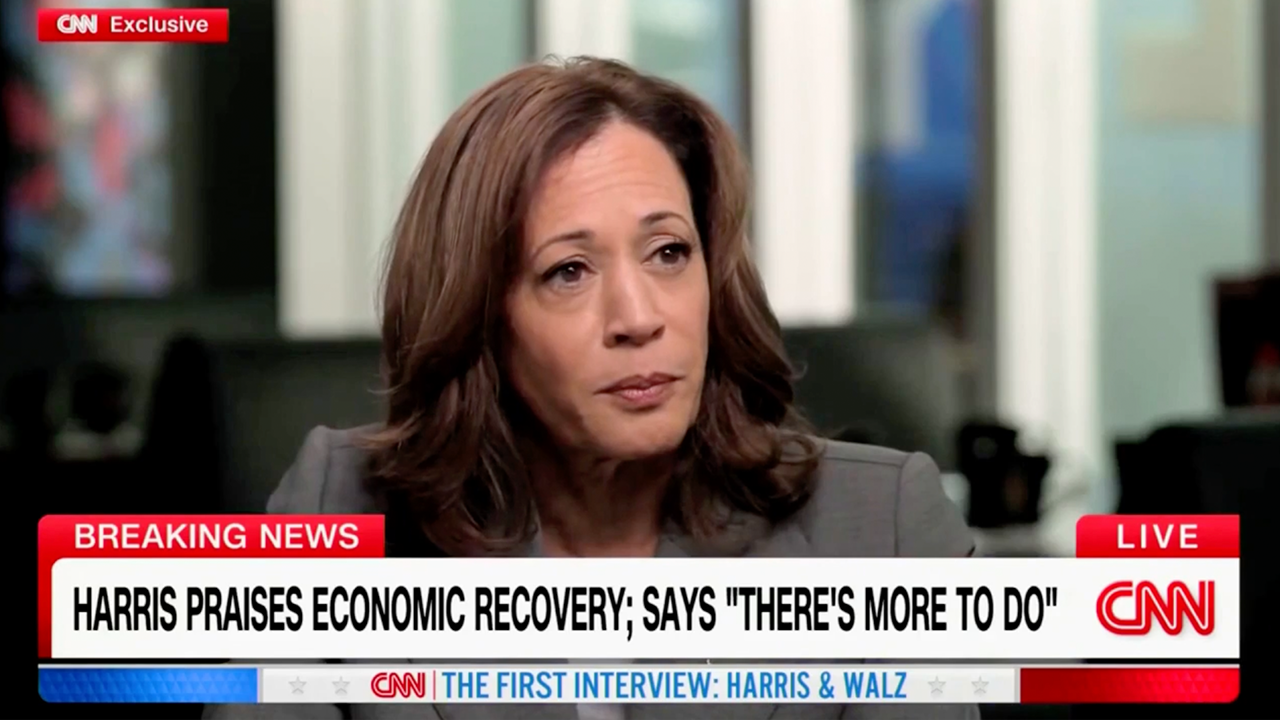Coronavirus levels in California wastewater now exceed last summer's peak, an indication of the rapid spread of FLiRT's new super-contagious strains.
California has “very high” levels of coronavirus in its wastewater, one of 21 states in that category, up from seven the previous week, according to estimates released Friday by the U.S. Centers for Disease Control and Prevention.
That means about 155 million people — nearly half the U.S. population — live in areas with “very high” levels of coronavirus in wastewater. In addition to California, the other states with “very high” levels are Alaska, Colorado, Connecticut, Florida, Hawaii, Idaho, Louisiana, Maryland, Minnesota, Nevada, New Hampshire, New Mexico, North Carolina, Oregon, Texas, Utah, Vermont, Washington, West Virginia and Wyoming. Washington, D.C., is also in that category.
Coronavirus levels in wastewater are also on the rise in Los Angeles County, and the pace of increase has accelerated. The county has also seen notable jumps this month in confirmed new infections, hospitalizations with positive coronavirus cases, and the share of emergency room visits attributable to COVID-19.
Nationwide, overall viral levels in wastewater are considered “high” for the second week in a row, according to the CDC. Estimates are subject to change as more data becomes available.
Most Americans probably know a family member, friend, coworker or acquaintance who has recently contracted COVID-19, perhaps while traveling or at a social gathering.
“If you call, I don’t know, 20 or 30 friends, you’re very, very likely to find that a bunch of them actually have COVID, or have recently had COVID, or are starting to have symptoms,” said Dr. Ziyad Al-Aly, a COVID expert and head of research and development at the St. Louis Veterans Affairs Health Care System in Missouri.
One notable recent case was President Biden, who tested positive for COVID-19 on Wednesday while traveling in Las Vegas. Biden returned to Delaware to recover. Los Angeles Mayor Karen Bass tested positive a few weeks ago, and Rep. Barbara Lee (D-Oakland) said Tuesday that she was celebrating her birthday while recovering from COVID.
“Our fight against COVID is not over!” Lee said on social media.
Across the country, the shadow of COVID-19 has grown more pronounced of late, with the usual seasonal surge in travel and socializing driving a new wave of infections. Many cases are relatively mild but nonetheless disruptive, forcing people to cancel trips or plans.
Some recently infected people have described painful COVID symptoms, such as a throat feeling like it's full of razor blades. Overall, however, there's no indication that FLiRT subvariants are associated with increased disease severity that would trigger a substantial increase in hospitalizations.
The CDC estimates that COVID-19 infections are increasing or likely to increase in 41 states, including California. There are no states where the coronavirus is declining or likely to decrease.
The COVID resurgence comes at a time when the increasingly widespread FLiRT family is increasing in prevalence nationwide. In the two-week period ending Saturday, the CDC estimates that about 80% of the country’s coronavirus specimens are of the FLiRT subvariants, up from 65% in the same period a month earlier.
Across California, the rate of positive COVID tests is also increasing. In the week ending July 15, 12.8% of tests came back positive. That’s up from 5.9% the month before and is close to last summer’s peak of 13.1%, which was recorded in late August and early September.
During the 10-day period ending July 6, the most recent for which data is available, coronavirus levels in Los Angeles County wastewater were at 36% of last winter’s peak, down from 27% in the 10-day period ending June 29.
Newly confirmed COVID-19 cases are also rising faster. During the week ending July 14, there was an average of 359 new cases per day in Los Angeles County, compared with 307 the week before. A month earlier, there were 154 cases per day.
Official COVID-19 case counts are undoubtedly undercounts, as they only include tests done in medical facilities, not those done at home, and they also don’t account for the fact that fewer people are getting tested when they feel sick. But overall trends are still useful in determining the trajectory of the summer wave.
COVID hospitalizations are also increasing, though they remain below last summer’s peak. In the week ending July 13, there were an average of 287 COVID-positive people per day in Los Angeles County hospitals, up from 139 in the same period the previous month. Last summer’s peak was the week ending Sept. 9, when an average of 620 COVID-positive patients were in the region’s hospitals per day.
During the week ending July 14, Los Angeles County reported that 2.8% of all emergency room visits were COVID-related, up from 1.8% in the comparable period the previous month but down from last summer’s peak of 5.1%.
Coronavirus levels are also high in wastewater in Santa Clara County, the most populous region in the San Francisco Bay Area and home to Silicon Valley. As of Friday, coronavirus levels were “high” in all of its sewers: San Jose, Palo Alto, Sunnyvale and Gilroy.
Doctors say it's important to get tested if you have COVID symptoms, such as fever, aches, sore throat, chills, fatigue, cough, runny nose or headache, as well as less common ailments like vomiting, diarrhea and stomach pain.
Most health insurance plans in California (at least those regulated by the state) are required to reimburse covered individuals for eight at-home test kits per month, if an in-network provider is used.
Additionally, “if you have insurance, your health insurer should cover the full cost of the test if a doctor orders it. You do not need to have symptoms to request a test,” according to the Los Angeles County Department of Public Health.
Eligible individuals can also search for free testing locations through the CDC website, testinglocator.cdc.gov. Those with health insurance may be required to provide insurance information.
People without health insurance in Los Angeles County can also get free COVID testing at the county's public health center's nurse-only clinics and multi-service vaccination sites. People 65 and older who live in Los Angeles County, as well as homebound residents, can also request two free test kits be mailed to them by filling out an online form. Los Angeles County libraries, as well as food banks and senior centers, may also have free COVID test kits available.
Health officials have also urged people to consider asking medical providers for antiviral treatments, such as Paxlovid, to help combat active COVID illness. Antivirals can be used to treat people with mild to moderate illness who are at risk of seeing their condition deteriorate.
“Waiting for symptoms to worsen is not recommended,” the California Department of Public Health says.
Health officials have previously said antiviral drugs are underused and have implored health care providers to prescribe them appropriately when indicated.
In an advisory, the California Department of Public Health said: “Most adults and some children with symptomatic COVID-19 are eligible for treatment… Providers should have a low threshold for prescribing COVID-19 therapies.”
In the past, the state of California offered COVID-19 virtual doctor visits for free to residents, but that program ended in March. The contractor that provided the service, sesamecare.com/covid, is now offering those medical services for a fee, albeit at a discount for California residents.
Uptake of the updated COVID-19 vaccine, which became available in September, has been relatively low. Since then, 36.7% of California adults 65 and older have received at least one dose of the updated vaccine, as have 18.5% of adults ages 50 to 64 and 10% of younger adults ages 49 and younger.
People who haven’t received an up-to-date COVID vaccine in the past year “should consider getting vaccinated, especially if they are older and have compromised immune systems,” said Dr. Peter Chin-Hong, an infectious disease expert at UC San Francisco. People most at risk of dying from COVID are those who are older or have weakened immune systems and haven’t been vaccinated recently.
Getting the 2023-24 vaccine now will allow you to continue receiving the updated COVID vaccine that is on track to be available this fall. CDC will recommend that everyone 6 months and older get the updated version of the 2024-25 vaccine.












